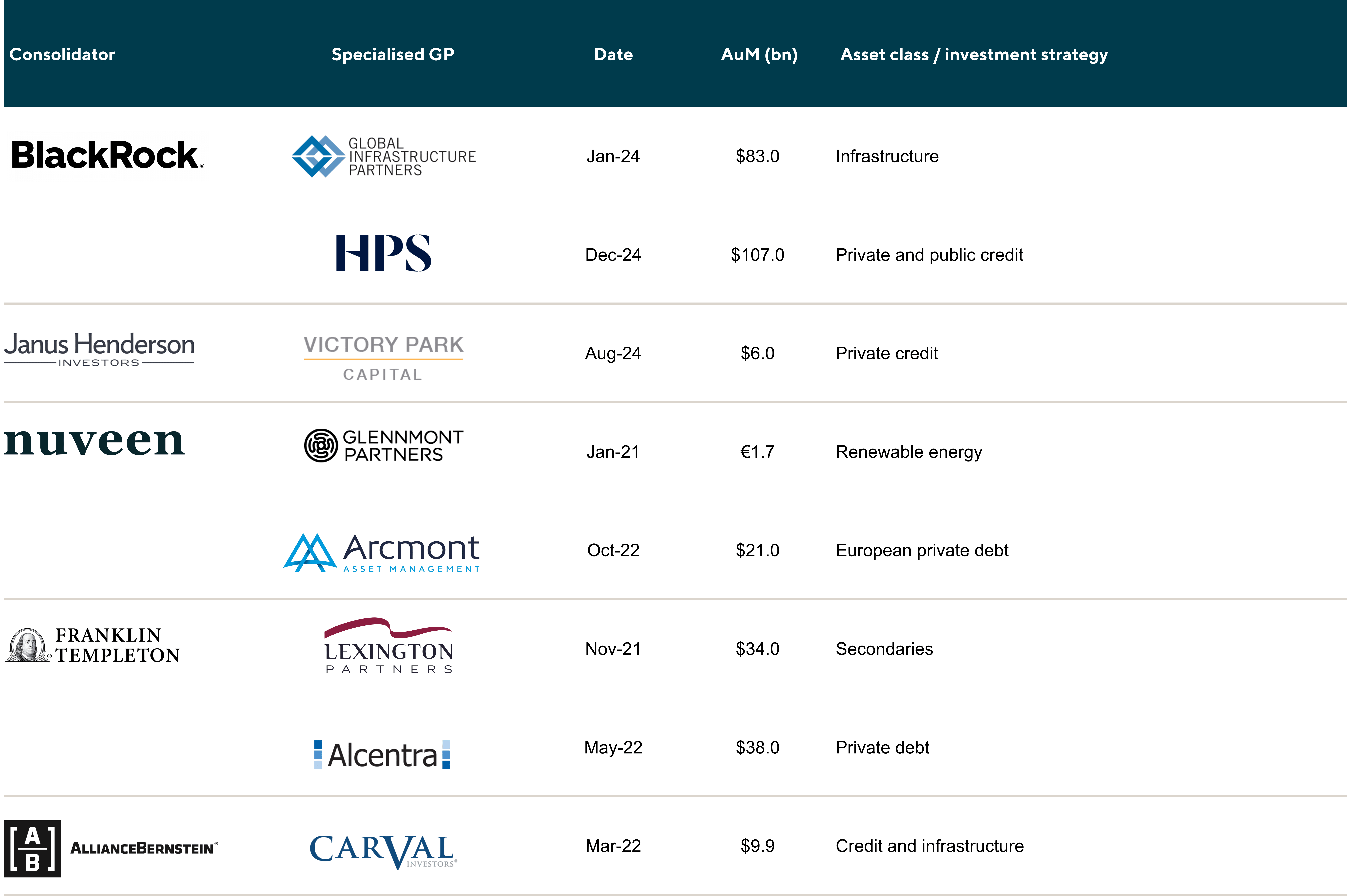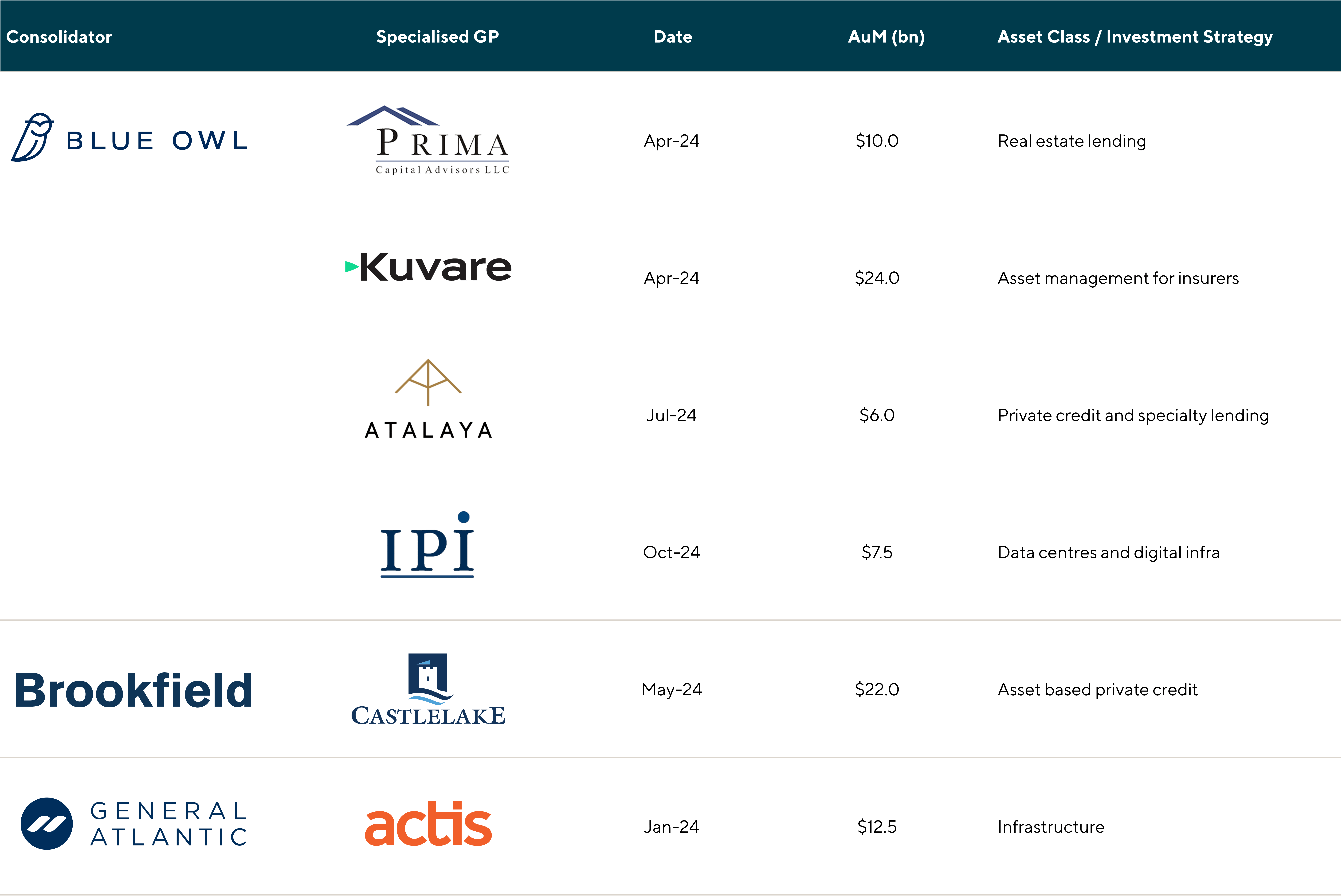Asset Management in Transition: M&A Trends and Strategic Shifts for 2025
| The asset management industry is undergoing a period of profound transformation, driven by shifting investor preferences, regulatory changes and the need for scale in an increasingly competitive landscape. These dynamics are fueling robust M&A activity across alternative, traditional and private wealth asset management sectors, creating significant opportunities for both buyers and sellers.
At Lincoln International, we specialize in helping clients navigate these complexities with precision and insight. With a proven track record of advising on both buy-side and sell-side transactions, our global team delivers tailored solutions to asset managers, private equity investors, and strategic acquirers. As the industry evolves, Lincoln’s dedicated expertise ensures clients are well-positioned to capitalize on emerging trends and unlock value through creative M&A strategies. |
Summary
-
Antoine Dupont-Madinier, Managing Director and leader of Lincoln’s strategic efforts in the UK, provides a 2025 outlook and analysis of the asset management sector.
- Click here to download a printable version of this perspective.
- Sign up to receive Lincoln's perspectives
Alternative Asset Management: Key Growth Drivers and Strategic M&A Activity
Although fundraising has slowed in recent years, alternative asset managers remain poised to benefit from strong secular growth drivers, including the expected revival of the capital flywheel—spanning realization, returns, fundraising and investing.
In 2024, strategic M&A activity in the alternative asset management sector reached new heights, with deal volume surpassing previous years. Buyers sought to address geographic gaps and expand capabilities, as demonstrated by Blue Owl’s notable acquisitions across infrastructure (IPI Partners), asset-backed credit (Atalaya Capital), real estate finance (Prima Capital) and insurance (Kuvare AM). Consolidators leveraged these acquisitions to integrate new products into existing sales channels and achieve cost efficiencies through economies of scale.
Selected Acquisitions by Alternative Asset Management Firms
On the sell-side, firms pursued M&A to accelerate growth by accessing strategic partners’ financial resources and distribution networks. This trend is particularly pronounced as capital flows concentrate among larger players, as highlighted by continuous Preqin fundraising reports, and as limited partners (LP) consolidate their relationships with general partners (GPs).
For GPs limited to a single asset class, investment strategy or geographic region partnerships such as Mergers of Equals (MOEs) and Joint Ventures (JVs) are being actively considered. These collaborations allow firms to cross-sell to LPs and enhance investment management prospects.
Valuations in private markets M&A remain strong, particularly compared to publicly listed peers. Earnouts are playing a growing role in bridging valuation gaps between buyers and sellers.
Private Wealth and Insurance: Tapping into New Opportunities
Individual investors represent 50% of global assets under management (AuM) but only represent 16% of AuM held by alternative investment funds, according to Bain(1).This disparity presents a significant growth opportunity for asset managers, who are expanding into the private wealth market by broadening fund distribution and developing tailored products.
Insurers are expected to continue increasing investments in alternative assets, driven by the rise of new investment strategies capable of achieving investment-grade credit ratings and the need to allocate capital to long-duration, high-quality, and inflation-resistant assets.
Throughout 2024, partnerships between alternative asset managers and insurers experienced significant growth, both in asset-light and asset-heavy models. Apollo, through Athene and Athora, has maintained a leadership position for several years. However, in 2024, Brookfield and Blue Owl made notable moves by acquiring AEL and Kuvare Asset Management, respectively.
Despite these developments, this trend remains primarily focused on U.S. large alternative managers. In Europe, stricter regulatory frameworks have so far limited the emergence of similar patterns, with little substantial progress observed.
Traditional Asset Management: Adapting to Market Pressures and Scaling Up
Traditional asset managers face mounting challenges, including shrinking margins, outflows from high-fee products, and concentrated inflows among a smaller group of managers. These pressures are compounded by the growing need for technological investment to remain competitive. As a result, European banks, insurers and independent firms are re-evaluating their role in asset management. They face a critical choice: double down on their efforts, form strategic partnerships to achieve scale or exit the sector entirely.
Those remaining in the industry are focused on achieving scale and building global leaders. Recent transactions illustrate these trends: Axa sold its asset management division to BNPP, and Natixis Investment Managers and Generali announced plans to establish a joint venture in asset management.
Traditional asset managers have also diversified into private market strategies as illustrated by BlackRock’s acquisition of GIP (infrastructure) and HPS (private credit).
Selected Acquisitions by Traditional Asset Management Firms

Minority GP Stakes: Expansion and Maturity in the Market
The middle market GP minority stakes sector, particularly in Europe, has seen significant growth, driven by increased capital needs for GP commitments and intensified competition for LP capital. Established GP stakes investors have achieved record fundraising, attracting new entrants.
While the European market benefits from similar growth drivers as the U.S., unique challenges—such as diverse legal structures and more widespread GP ownership—make deal execution more complex and time-intensive.
Signs of maturity are increasingly evident in the sector, with a growing variety of exit strategies emerging. These include sales to larger GP stake firms, partial or full sales to strategic consolidators, continuation vehicles and management buybacks. Successful exits and the diversity of types are reinforcing the credibility of GP stakes as an investment strategy and as a tool for GP owners to manage their business. Proceeds can be allocated towards facilitating succession planning, developing new investment strategies, expanding into new markets, strategic acquisitions or enhancing their existing platform.
Implications for Wider M&A
As the asset management industry continues to evolve, M&A will play a pivotal role in shaping its future. Whether through strategic acquisitions, partnerships, or minority stake investments, firms must adapt to shifting market dynamics to remain competitive.
Lincoln International is uniquely positioned to help clients navigate this transformation. With deep expertise across alternative, traditional, and private wealth asset management, our team delivers tailored M&A solutions that drive value and position clients for long-term success. From identifying high-growth opportunities to executing complex transactions, Lincoln’s global platform ensures clients achieve their strategic objectives in an increasingly competitive landscape.
| For asset managers, private equity investors, and strategic acquirers, the time to act is now. Contact Lincoln International to learn how we can help you capitalize on the opportunities ahead. |
Sources:
1) Bain & Company – Global Private Equity Report – Why Private Equity Is Targeting Individual Investors













